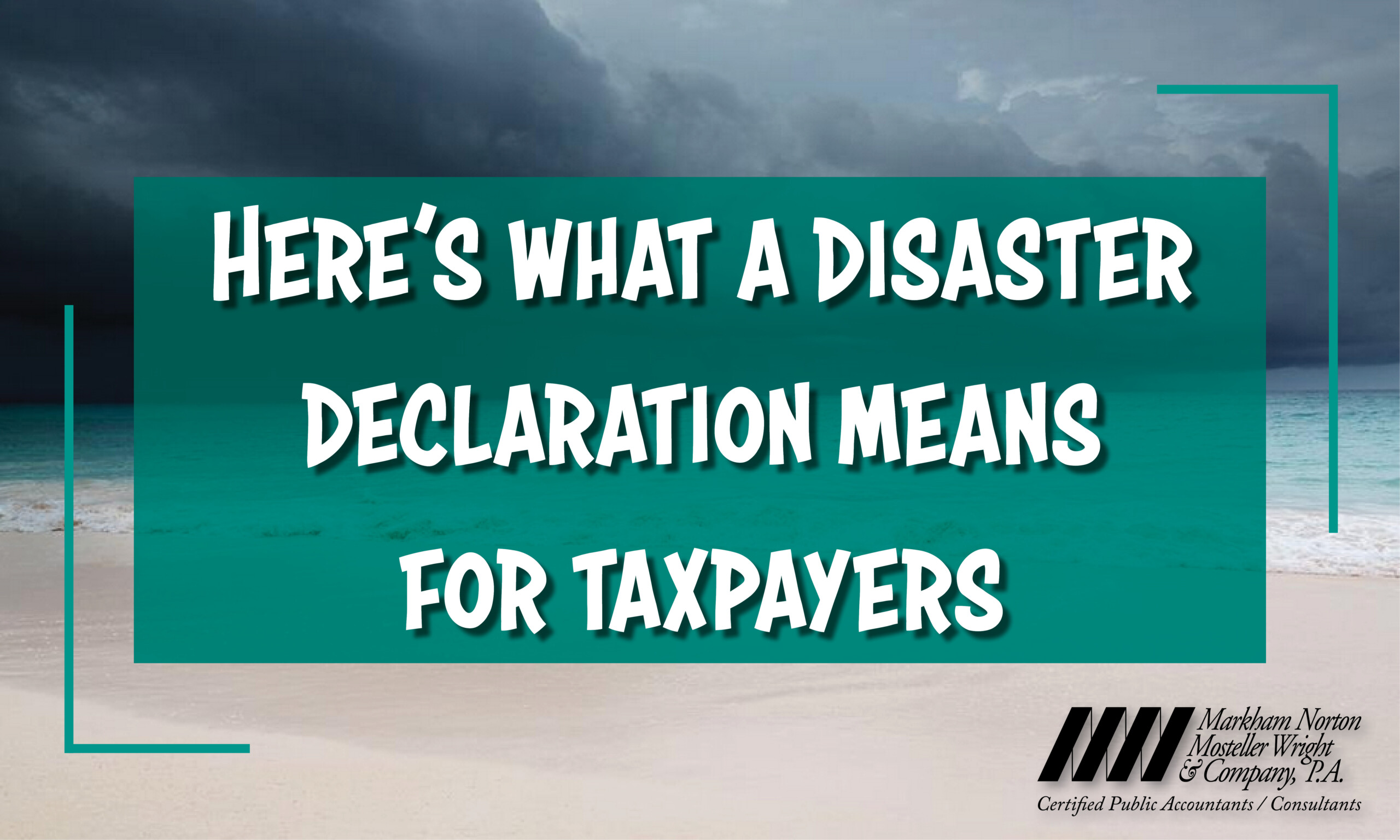Here’s What A Disaster Declaration Means For Taxpayers
Before the IRS can choose to authorize tax relief for disaster victims, the Federal Emergency Management Agency must issue a disaster declaration. Generally, the IRS will authorize disaster tax relief to all areas identified on a disaster declaration if FEMA identifies at least one area qualifying for their Individual Assistance program.
Here are some tax-related things that often happen after a disaster:
The IRS gives taxpayers more time to file and pay. Taxpayers whose address of record is in an area qualifying for IRS disaster tax relief will automatically receive extra time from the IRS to file returns and pay taxes. The IRS’s disaster assistance page provides disaster updates and links to resources. Information is usually available on the IRS Twitter account as well. Taxpayers can also call the agency’s disaster line at 866-532-5227 with questions.
Taxpayers can qualify for a casualty loss tax deduction. People who have damaged or lost property due to a federally declared disaster may qualify to claim a casualty loss deduction. They can claim this on their current or prior-year tax return. This may result in a larger refund.
People can apply for a disaster loan or grant. The Small Business Administration offers financial help to business owners, homeowners, and renters. This help is for those in a federally declared disaster area. To qualify, a taxpayer must have filed all required tax returns.
Taxpayers might need a tax return transcript. People who need a tax transcript to support their disaster claims can obtain free transcripts by using Get Transcript to access their transcripts immediately online or to request mail delivery. They can also call 800-908-9946 to request mail delivery or submit Form 4506-T, Request for Transcript of Tax Return.
People who need a copy of their tax return, should file Form 4506, Request for Copy of Tax Return. The IRS waives the usual fees and expedites requests for copies of tax returns for people who need them to apply for disaster-related benefits or to file amended returns claiming disaster-related losses. If filing Forms 4506-T or 4506, the taxpayer should state on the form the request is disaster related and list the state and type of event. This helps speed up the process.
People who relocate need to submit a change of address. After a disaster, people might need to temporarily relocate. Those who move should notify the IRS of their new address by submitting Form 8822, Change of Address.
The IRS encourages affected taxpayers to review all federal disaster relief at DisasterAssistance.gov.
IRS Tax Tip: 2022-83
___________________________________________
Our team at MNMW is working constantly to bring you the most recent news and updates related to the COVID-19 crisis that could impact you and your loved ones.
For more information, you can visit our MNMW Coronavirus (Covid-19) Resource page with the button below or call in at (239) 433-5554.
Summer Hours:
June 3 – Sept. 2 our offices will be open 8am-5pm Monday-Thursday. Closed on Fridays.


